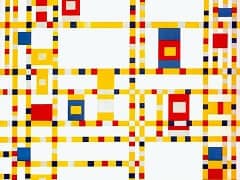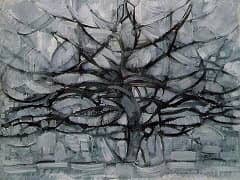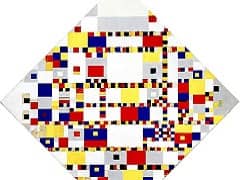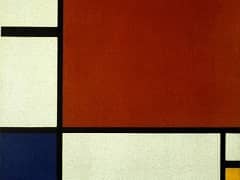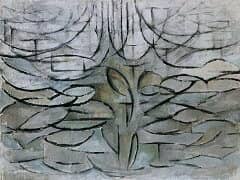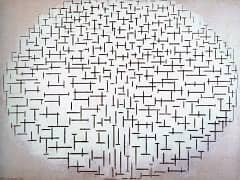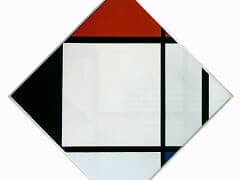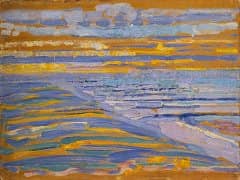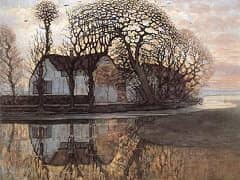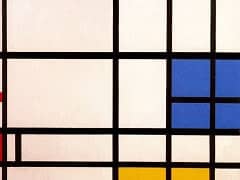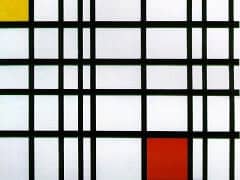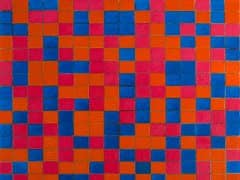Blue Facade, 1914 by Piet Mondrian
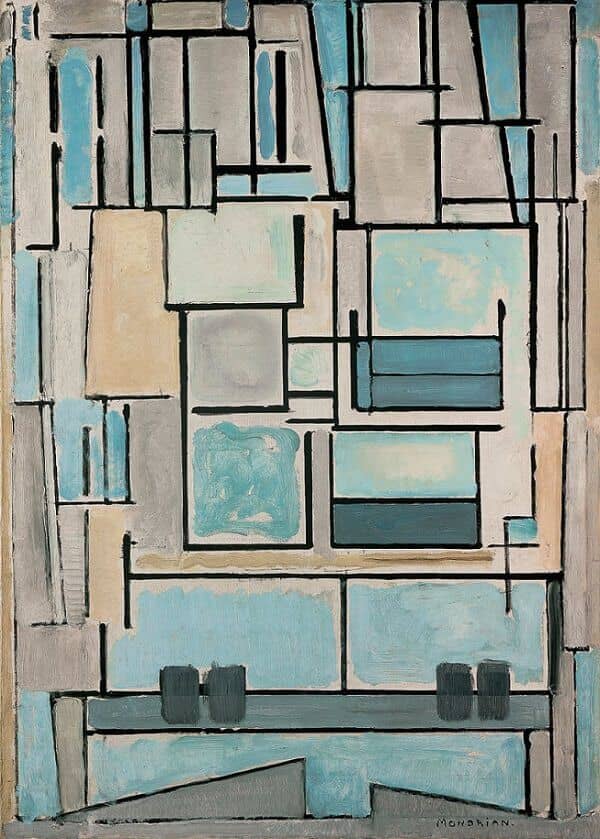
There is a genetic similarity between the Blue Facade and the Oval Composition, in addition to the fact that both must have been executed more or less in the same period, as 1913 went over into 1914. Blue Facade represents a more advanced stage than the Oval Composition, as is evidenced by comparing it with contemporaneous works by the two founders of cubism, Picasso and Georges Braque, who were also tending toward larger planes and a broader scale. Furthermore, and characteristic of his 1914 work in general, Mondrian has here arrived at total elimination of the curve and drastic limitation of the diagonal. Finally, the triad of colors used in the 1913/14 painting is reduced still further to a gamut of blue and blue-gray, which is also in agreement with the 1914 development.
This limitation of the color scheme to various tints of blue is also connected with the genesis of the work. In Blue Facade, Mondrian took a great step beyond the boundaries of cubism. While synthetic cubism, on which Picasso, Braque, and now Juan Gris as well were working during these years, was again trying to establish a connection between geometrical forms and the objects of daily life, by starting with geometrical forms (cylinders) and making them resemble things (bottles), Mondrian advanced on the way to an ever-stricter abstraction, an ever-further departure from perception. This abstraction meant that very little of the thing - value of the original perception was taken over into the painting, the work being dominated by the rhythm abstracted from thing-forms during the creative process.

